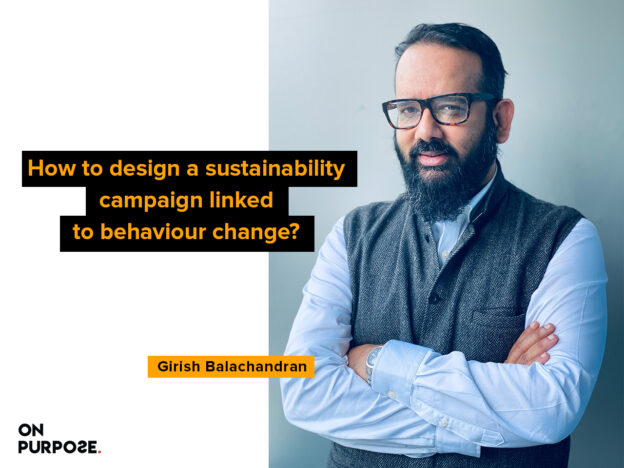Sustainability can mean different things for different people. For organisations wanting to prove their sustainability credentials, the motivations could vary from wanting to attract ESG (Environment, Society and Governance) focused funding, to meeting compliance requirements, to attracting talent wanting to work with organisations that care about planet and purpose over profits.
For grassroots organisations or brands wanting to encourage more sustainable living, success graduates from raising awareness levels, to shift perceptions to ultimately changing habits and behaviour. In this article, we’re going to focus on the latter. We’ll cover storytelling for corporate sustainability separately.
Here’s how we can design a sustainability campaign that meets desired objectives:
- Start with clear (and ambitious) goal-setting –This will help define what success looks like and focus the effort on meeting defined targets. For e.g. getting 1 million households in Goa to adopt segregation at source for more sustainable waste management. While measurability is important, it’s also important for the goals to be ambitious (and sometimes even audacious!) to inspire the people and communities we want to reach and engage.
- Understand the barriers and motivations to act –It’s critical to develop empathy for the audiences we’re trying to reach and engage. This is done through processes of immersion, exploration and discovery of the audience’s lifestyle and factors that influence decision-making. It puts human beings at the centre of the campaign and helps us get a deeper sense of their challenges and how they consume content. It also helps us anticipate and counter reasons to ‘not’ act through the campaign messaging.
- Establish a compelling ‘why’ for the audience – Changing habits formed over years of conditioning is difficult. Especially, if the change in lifestyle we’re seeking requires people to do more, or do things differently, or in some cases even pay more for more sustainable alternatives. A strong, emotive narrative can help make the problem more relatable by focusing on three core arguments: how it’s impacting me and my loved ones, how it’s impacting us as a community and why we need to act now and with urgency.
- Innovate in message delivery – How do we take a clear and compelling message to an audience in a new and exciting way that will get them to care and encourage them to share? The answer lies in a mix of compelling emotive content that either entertains, educates or creates a sense of urgency delivered on platforms that are trusted by the recipient. This could be traditional news channels, or social media platforms where people consume and engage with content shared by friends, influencers and organisations that align with their value systems.
- Make it easy for people to act – And celebrate them when they do! Successful sustainability campaigns have clear calls to action that allow people to engage through small steps. After establishing the cost of not changing a habit and the benefits of doing so, the campaign narrative must provide specific actions on the path to change. Incentives (personal) and accountability (towards community) also helps; so regular updates on progress and celebrating milestones will create momentum for the campaign through a sense of shared success.
- Show, don’t tell –Telling people how they must act or behave is less likely to yield results than showing them how others are doing it and the positive impact it’s having on them and their loved ones. By using relatable ‘archetypes’ i.e. people in roles that others can easily relate with, as role-models, we’re tapping into people’s emotional core to act smartly for themselves and those around them. When we show, rather than tell, we make people active participants in the storytelling. By using ‘trusted messengers’ we can help overcome barriers, such as fear of stigma and address social norms that conflict with the desired behaviour.
Successful sustainability campaigns need to be multi-dimensional bringing together different elements to work together. From a communications perspective, it requires a holistic, experiential effort across channels to create credibility and reinforce messaging to normalize desired actions.
Managing Partner, ON PURPOSE


